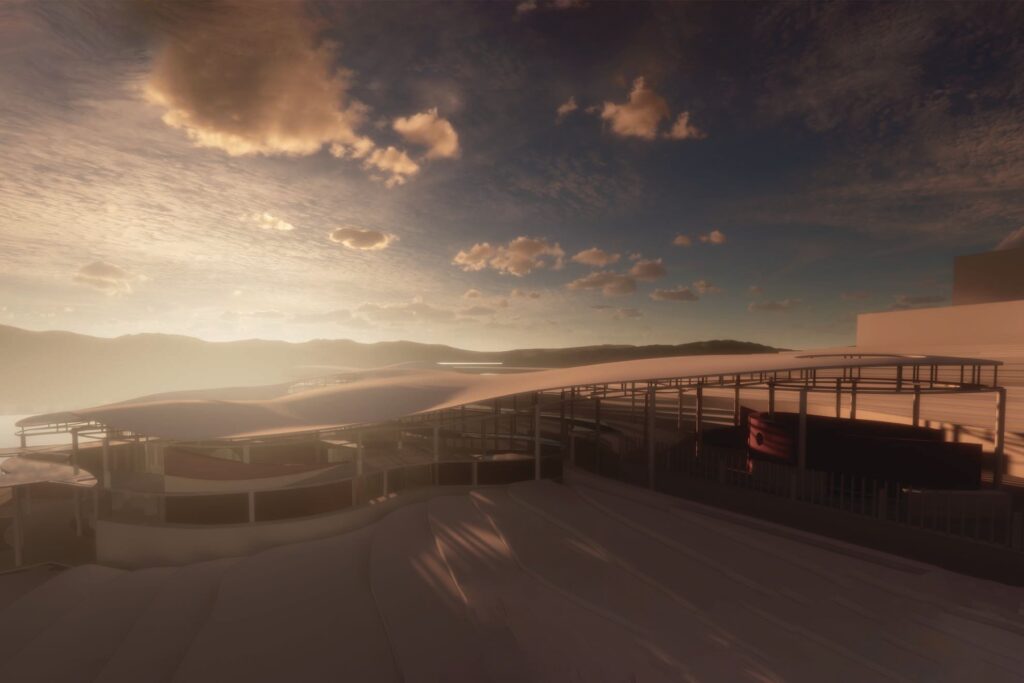Steeped in Stigma: Reimagining healing in the Rwandan community experiencing intergenerational trauma
Bachelor Thesis by: Ramona Gakuba B.Arch / Thesis Advisors: Philip Ra, AIA & Mini Chu
Awards
B.Arch Thesis Humanitarian Award
Rwandans have suffered a loss of identity due to generations of trauma. When the Germans and Belgians colonized the country Rwandans already had a ruling system set in place. Threatened by the power of a unified Rwanda, colonizers divided them to create tension and assume better control. This is when traumatization began. Civil wars, Rwandans fleeing to other countries, the Genocide – trauma began as a response to the colonial rule and was later passed down to future generations. I felt the need to bring attention to their intergenerational trauma and offer an architecture of identity reclamation.
Umuganda, the idea of coming together for one common purpose, is a cultural initiative with the goal of developing the country at a small scale (neighborhoods and provinces), which then impacts a bigger scale (the country). Every last Saturday of the month, for a few hours in the morning, businesses are closed and neighbors get together to plant trees and clean the city. The initiative of helping the country in order to participate in its advancement by being an active citizen is the inspiration for this design, or, ubuvuzi (healing).
My thesis challenges both the ongoing stigma around mental health in Rwanda and its medical infrastructure by proposing the use of vernacular architecture as an innovative strategy. The design combines psychological research on emotion-based therapy and modern techniques of vernacular architecture into a cultural healing space for Rwandans experiencing intergenerational trauma. Rwanda is known as “The Land of a Thousand Hills,” and the site becomes a symbol of Rwandan trauma as the undulating topography is cut by three concrete planes sitting at varying heights, revealing remnants of voids left behind by extruded masses of the soil. Anchored brick walls curve in order to nest historical and artistic programs; the brick is locally sourced and used as a temperature stabilizer for the dry tropical climate. Masonry construction is also used as an architectural strategy to respond to the initiative of Umuganda, by proposing a construction technique which encourages collaborative work through building brick by brick.
Nested spaces are broken into three programmatic categories defined in Kinyarwanda vocabulary: kwibuka (to remember, recollection of events), kuvuga (to speak, to share), kwandika (to write, to expose). Kwibuka host Rwandans’ recollection of their stories in the museum and gallery as part of the community’s healing journey. The kuvuga modules are for Rwandans to share their stories with one another at indoor and outdoor workshops, as well as outdoor hearths. The recording of stories takes place in the library for the historical programs and the gallery for the artistic ones. Kwandika spaces embody the attitude of “remember so you don’t forget,” encouraging Rwandans to acknowledge and express what they feel for the sake of healing.
As a symbol of shelter, a thin undulating roof sitting on trusses supported by tall slender columns softly floats above the nested programs. Mimicking the rolling hills of Rwanda peeled and extruded from the landscape, the building symbolizes the exposure of what lies beneath.

